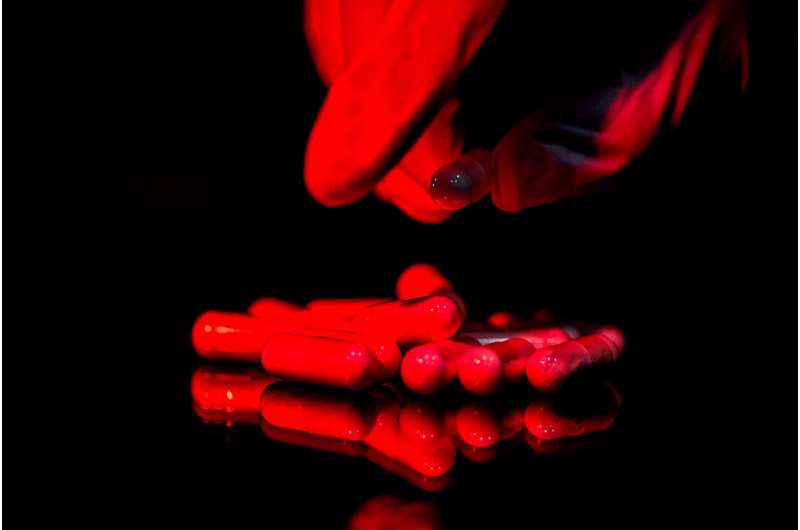
There could soon be a new COVID-19 treatment in town—a pill that promises to help unburden overloaded hospital systems.
Pharmaceutical company Merck asked the U.S. Food and Drug Administration last week to authorize Molnupiravir to be the first authorized pill to treat COVID-19. All other treatments authorized by the agency must be injected or administered intravenously.
It’s that distinction—a pill rather than a needle—that makes Molnupiravir a compelling solution to the pandemic’s hospitalization crisis, says Mansoor Amiji, university distinguished professor of pharmaceutical sciences and chemical engineering at Northeastern.
“The enthusiasm around Molnupiravir, around the Merck antiviral, is really because it’s a pill,” Amiji says. “It changes when you are going to start treating patients.”
With such a pill, physicians could prescribe treatment for COVID-19 patients not long after they test positive and begin displaying symptoms, Amiji says. Doctors wouldn’t have to wait for a patient’s case to get so severe that it requires hospitalization in order to begin using FDA-authorized, targeted treatments.
A five-day course of the oral medication reduced the chances of newly diagnosed COVID-19 patients ending up in the hospital by about 50% in Merck’s studies.
“It should greatly reduce the burden—not completely, but if we could cut it by half, that would make a very big difference,” says Gary Young, professor of strategic management and healthcare systems at Northeastern and director of the Northeastern University Center for Health Policy and Healthcare Research.
While some hospitals are no longer seeing the flood of COVID-19 patients that came in 2020, others have been overwhelmed with them during the most recent surge of cases of the virus—particularly in areas where vaccination rates are low. For some hospitals, this has meant a shortage of beds or staff to care for patients with the virus or other health issues or injuries that might require hospitalization.
To manage the surge, some healthcare systems have deferred care for non-urgent issues, or diverted patients to other hospitals. Such patient-shuffling has led to cardiac patients dying while waiting for space in an Intensive Care Unit, to offer a serious example of the risks of diverting patients. There have also been reports about some hospitals that had to ration care, Young says. Simply because they didn’t have enough ventilators, they triaged patients based on their prospect of surviving the illness.
“It’s not occurring on a wide-scale basis,” Young says. “But it’s occurring in a country that doesn’t normally think of itself as one that has to ration healthcare services. We don’t normally leave people to die.”
What is a broader issue across the country is that the pandemic has taken a significant financial toll on hospitals—particularly ones that were already struggling financially and are often in rural areas that require patients to travel long distances to get to facilities. Many hospitals shut down elective procedures, which often subsidize other services offered at the hospitals, Young says.
“Many hospitals have been really whacked financially. The fact that they are limping has some broader implications for quality of care down the road. Ultimately, that may translate into some very tragic situations,” he says. “[The Merck pill] could reduce the financial toll that hospitals are experiencing. Hospitals won’t have to curtail services.”
Molnupiravir is a 40-capsule treatment. Patients prescribed the COVID-19 pill by a physician would take four capsules twice a day for five days.
The treatment targets the replication process of SARS-CoV-2, the coronavirus that causes COVID-19, to prevent it from making more of itself in a patient’s body and worsening the infection.
“What the virus does is it infects our cells and then uses our cells as a factory to reproduce itself,” Amiji explains.
The coronavirus has to replicate its RNA in order to duplicate itself. RNA is made up of four nucleotides, which are essentially genetic building blocks that the virus uses to make more of itself. Molnupiravir creates fake building blocks that interfere with that process. “Basically, instead of putting the actual nucleic acid molecule, the virus uses this analog instead,” Amiji says. “So it’s creating mistakes in the viral genome. And when it has created that mistake, this virus doesn’t have infectivity anymore.”
Both Amiji and Young caution against thinking of the Merck pill as a “silver bullet” in the fight against COVID-19.
“It needs to be considered a tool in the tool chest along with vaccinations and other public health practices that we’ve already been engaged in,” Young says. “We need to think about all of these different tools to combat this virus.”
Therapies to treat COVID-19 patients are still part of the puzzle, Amiji says, as much of the world remains unvaccinated, disparities in access to vaccines persist across the globe, and variants of the virus continue to threaten the process we’ve made in the fight to end the pandemic. But treatments should not be seen as a replacement for vaccines, he says.
“There is no substitute for vaccination,” Amiji says. “Vaccination is the gold standard. It is the must. It really is what will save us and bring us out of this pandemic.”
Eva Botkin-Kowacki, Northeastern University

